Clouds in Art—Stratus, Cumulus, Cirrus, and Many More!
Clouds in art are why the term “landscape painting” is a bit deceiving. It suggests that the subject of the artwork is the land, and yet it is...
Sandra Juszczyk 25 July 2024
How did Jesus inadvertently become a gardener in art? Well, it all started with a simple mistake. But maybe there’s a profound symbolic meaning behind it? In this article, I want to show you depictions of Noli me tangere you haven’t seen before!
Noli me tangere is a Latin phrase meaning “Do not hold on to me”. It refers to a scene depicting the moment when Jesus, after his resurrection, appears to Mary Magdalene in the garden. The phrase encapsulates Jesus’ words to Mary, instructing her not to touch him. This encounter is a significant post-resurrection event, emphasizing spiritual transformation and the nature of Christ’s resurrected body.
The scene has been a recurring subject in Christian art, inspiring various interpretations and depictions throughout art history.
This iconographic motif finds its roots in the Bible, specifically in the Gospel of John (John 20:1–18) in the New Testament. The narrative recounts the moment when Mary Magdalene, upon discovering Christ’s tomb empty, wept until Jesus addressed her:
He asked her, “Woman, why are you crying? Who is it you are looking for?”
Thinking he was the gardener, she said, “Sir, if you have carried him away, tell me where you have put him, and I will get him.”
Jesus said to her, “Mary.”
She turned toward him and cried out in Aramaic, “Rabboni!” (“Teacher”).
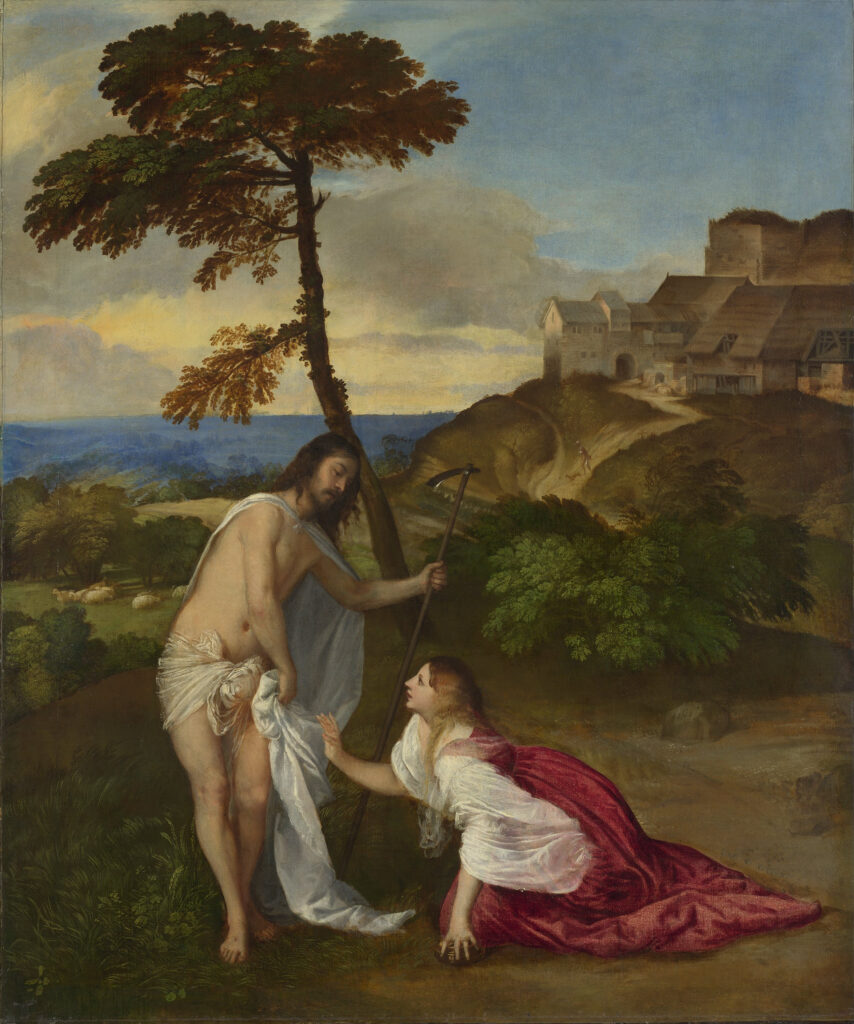
Titian, Noli me tangere, ca. 1514, The National Gallery, London, UK.
(The X-ray examination of the painting proves that Titian made many alterations to the first composition of this painting, and Christ was possibly wearing a gardener’s hat).
A man initially mistaken for the gardener is revealed to be the risen Jesus. The subsequent moment, where Mary reaches out to him and Jesus utters the famous words “Noli me tangere” (meaning “Do not hold on to me [for I have not yet ascended to the Father],” John 20:17), has become a popular subject in Christian art, boasting a rich iconography.
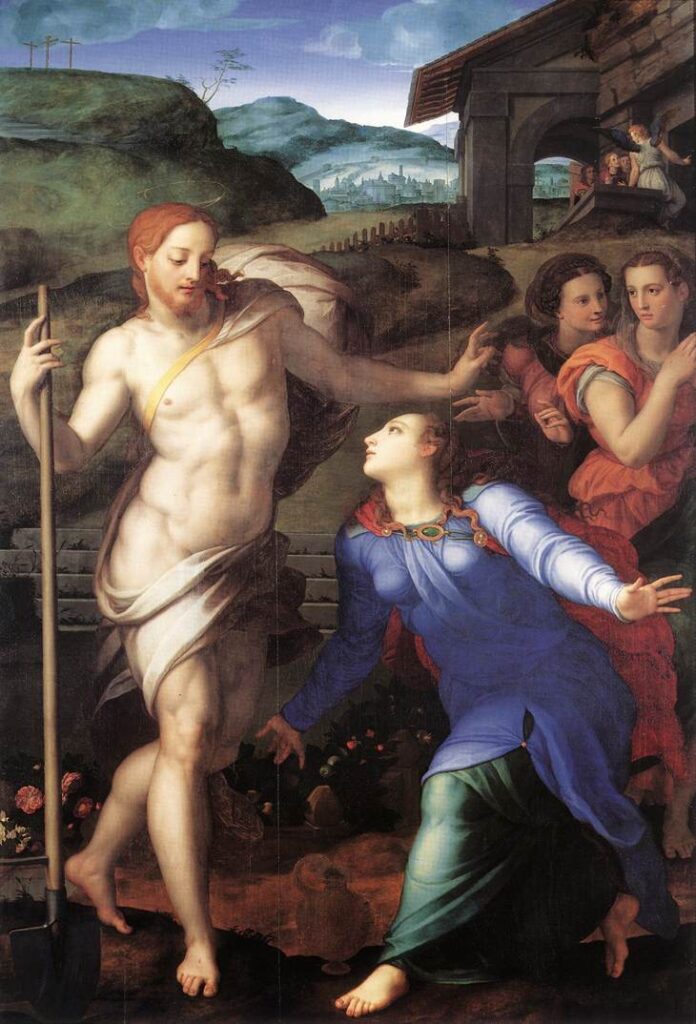
Agnolo Bronzino, Noli me tangere, 1560/1561, Musée du Louvre, Paris, France.
Here, of course, Jesus does his elegant “you can’t touch me” swing.
Artists extensively interpreted the Noli me tangere scene—the meeting of Mary Magdalene and Jesus served as a creative space to explore various themes like resurrection, renewal, and the connection between Jesus and the metaphorical Garden of Eden. Some depictions even portrayed Jesus with the accessories of a gardener, including spades, shovels, rakes, and gardener attire.
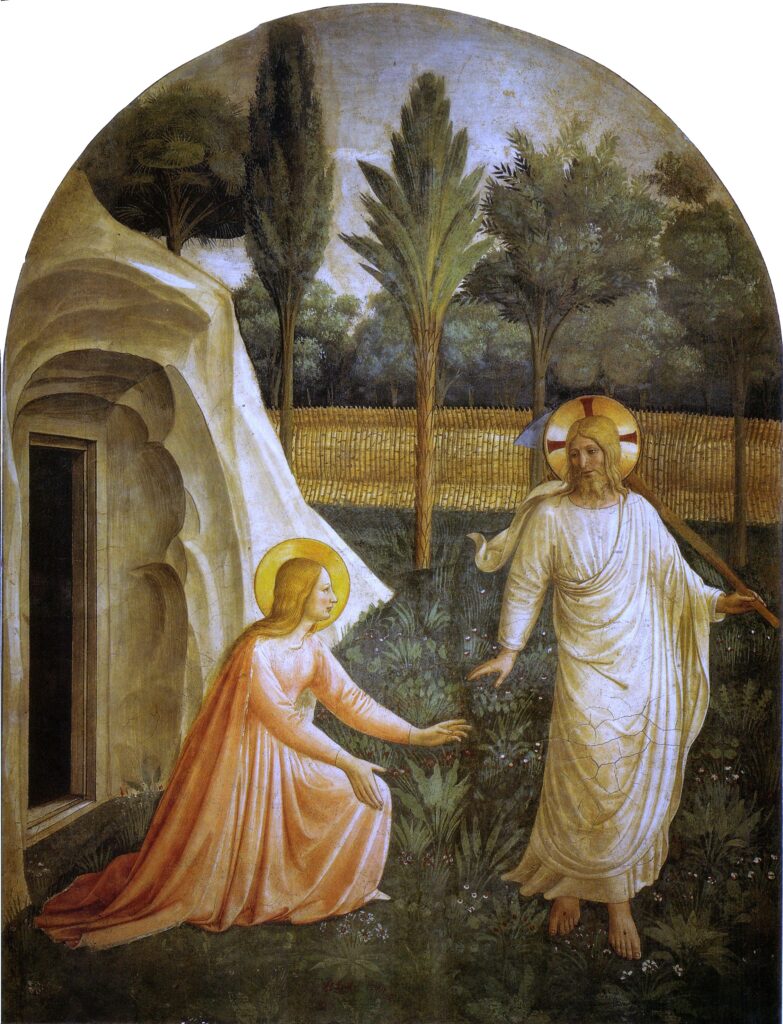
Fra Angelico, Noli me tangere, c. 1438-1440, fresco in the convent of San Marco, Florence, Italy.
In this painting by Alessandro Allori, we can see how the resurrection motif is the most prominent–Christ holds a banner with the sign of the cross (symbolizing his triumph over death) and has visible signs of His passion. The scene takes place in a garden setting (which symbolizes new life and the renewal of creation) and we can see an empty tomb (also indicating that Jesus has risen from death). The same goes with the panel created by the imitator of Andrea Mantegna.
Even if Jesus is not explicitly portrayed as a gardener, many artworks include a garden setting.
This setting seems to be natural for the scene—in the Gospel of John we read as follows:
So they took the body of Jesus and bound it in linen cloths with the spices, as is the burial custom of the Jews.
Now in the place where he was crucified, there was a garden, and in the garden a new tomb in which no one had yet been laid.
In this painting created by female Renaissance painter Fede Galizia, Jesus is deprived of his gardening tools and wears only a white shroud. Behind the main characters of the scene we can witness beautiful garden scenery with flowers.
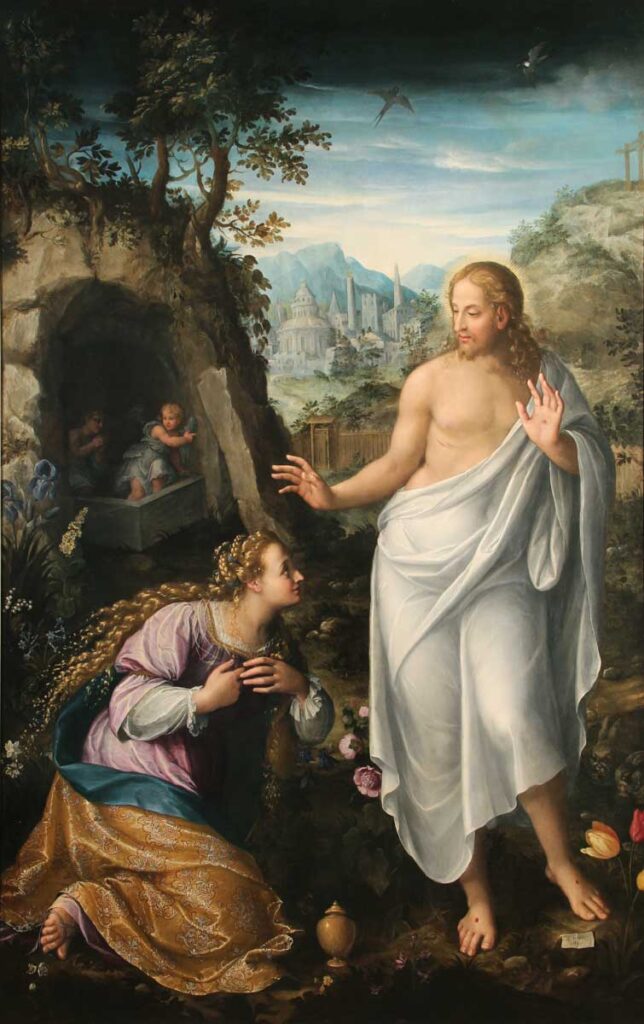
Fede Galizia, Noli me tangere, 1616, Pinacoteca di Brera, Milan, Italy.
In this painting by Andrea del Sarto, the scene takes place in a fenced garden (probably inspired by the monastic gardens). Here, we can observe the emphasis on the resurrection and Jesus’ martyrdom (symbolized by the palm tree).
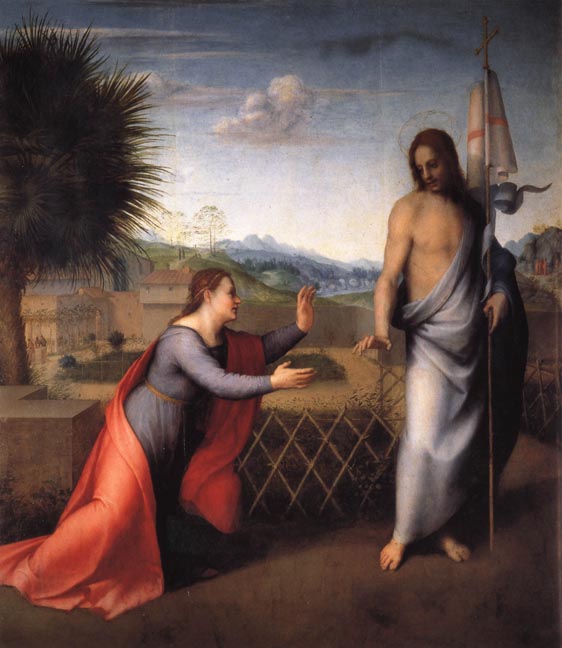
Andrea del Sarto, Noli me tangere, 1510, Uffizi Gallery, Florence, Italy.
While most depictions center on the encounter of Mary Magdalene with Jesus, emphasizing her recognition and desire to connect with him in the garden, some artworks present Jesus alone in the scene. For instance, in Manet’s painting, Christ, adorned with a halo symbolizing His divinity and triumph over darkness and death, is portrayed holding a gardener’s hoe.
It’s worth noting that this painting is a rare example of Manet’s religious paintings.
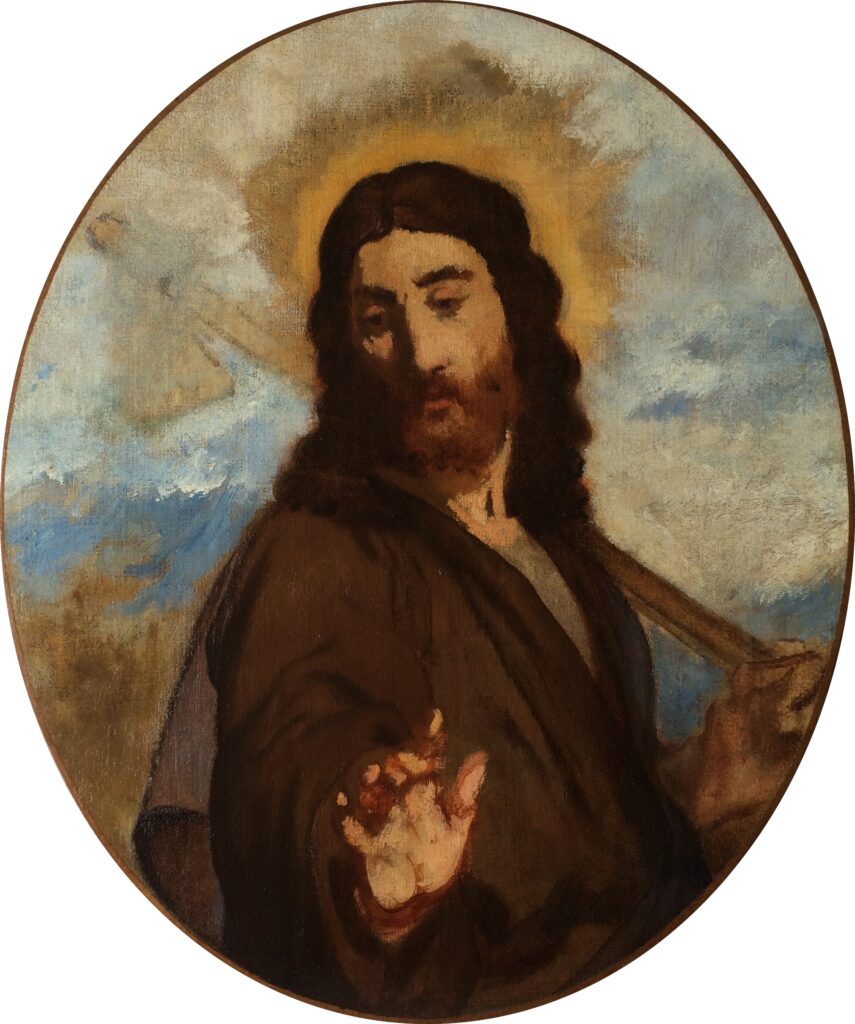
Édouard Manet, Christ the Gardener, 1856-1859, private collection.
The Bible doesn’t say anything about Jesus wearing a gardener’s hat or holding a shovel (although there might be an indication that he’d borrowed a gardener’s clothes as he left the burial linen cloths in the tomb) but how better to transfer this biblical narrative to a painting than giving Jesus a shovel? I don’t know how about you, but I love these depictions!
So, what if I told you that Mary Magdalene’s mistake had a deeper, symbolic meaning? Jesus as the Divine Gardener is a metaphor for him gardening our souls (and eradicating evil). As I’ve mentioned earlier, a garden symbolizes renewal and rebirth, and portraying Jesus as a gardener adds another layer of the Divine Garden metaphor. Jesus became a divine gardener (just like God, who planted the Garden of Eden and was the first gardener) whose task is to restore humanity.
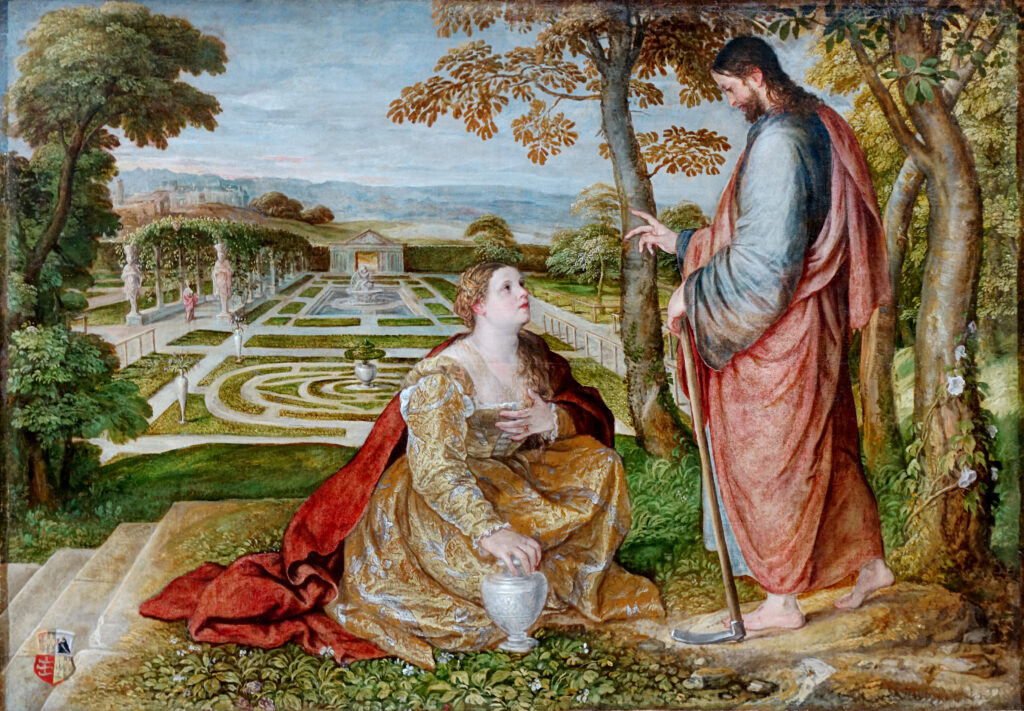
Lambert Sustris, Noli me tangere (Christ Appearing As A Gardener To Mary Magdalene), between 1548 and 1560, Palais des beaux-arts de Lille, Lille, France.
Jo-Ann A. Brant, John (Paideia: Commentaries on the New Testament), Michigan 2011.
Cecil Gould, A Famous Titian Restored, “The Burlington Magazine”, Vol. 100, No. 659, pp. 44-50.
DailyArt Magazine needs your support. Every contribution, however big or small, is very valuable for our future. Thanks to it, we will be able to sustain and grow the Magazine. Thank you for your help!